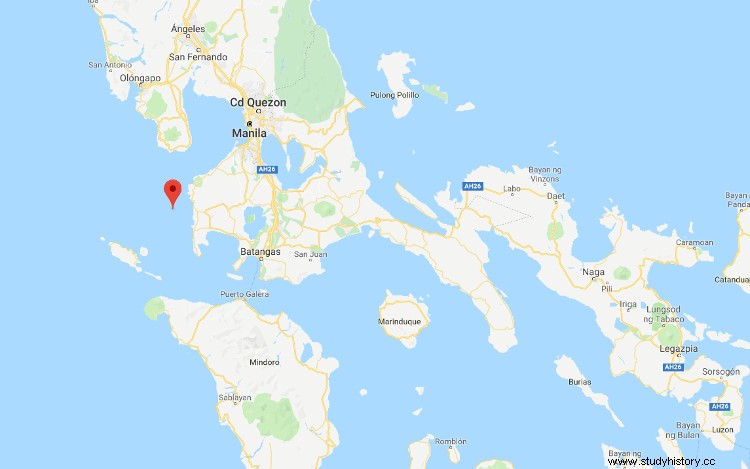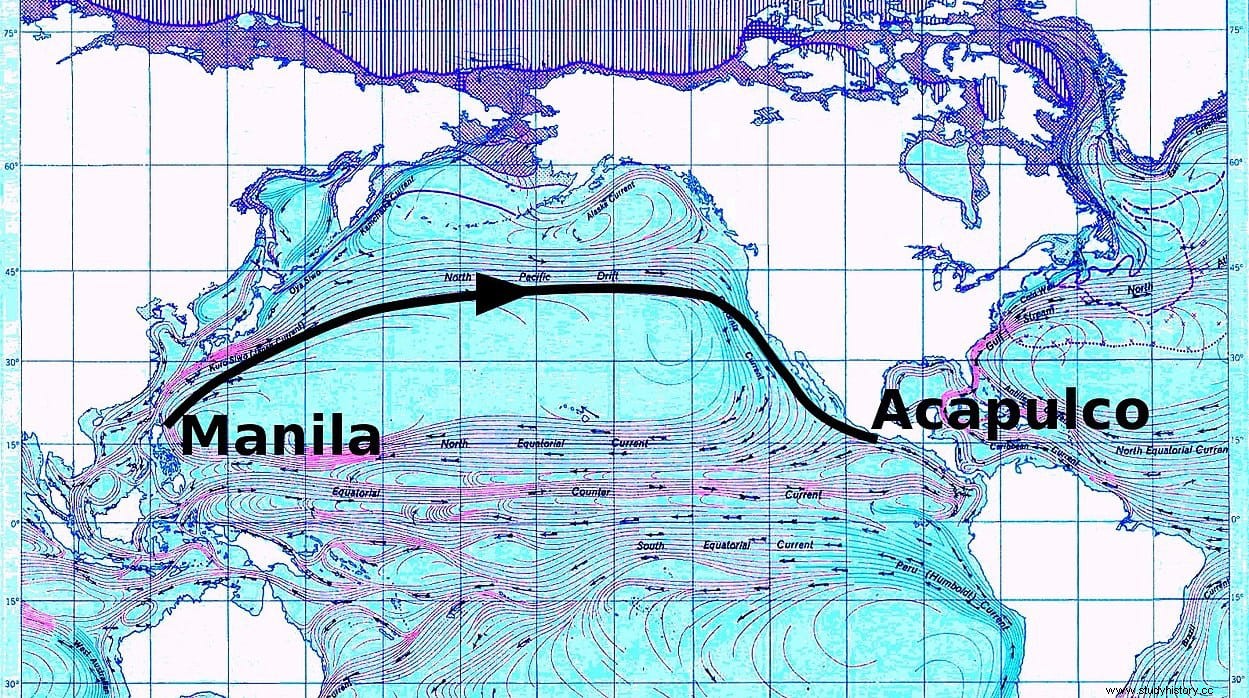You may have heard of Frank Goddio. He is an underwater archaeologist, born in Morocco but of French nationality, who a couple of decades ago discovered the location under the sea of the Egyptian city of Heracleion and has also directed some important excavations around Alexandria. But, above all, he has become famous for his work on shipwrecks, from which he has rescued the Napoleonic ship Orient , two indianmen , several junks and the one that interests us here, the Spanish galleon San Diego .
Goddio used the study that the historian Patrick Lizé, specialized in underwater archeology and naval issues, had carried out on the battle that in the year 1600 held the San Diego off Manila Bay against four Dutch ships, the Eendracht , the Hendrik Frederik , the Hoop and the largest, the Mauritius , who were trying to seize Manila. It was a meticulous job that Lizé carried out in the Archivo General de Indias, as well as others in the Netherlands, finding a lot of documentation on that episode.
Among the information he collected was the shipboard inventory (weapons, provisions…) of the San Diego , as well as the memoirs about the events written by two priests from the Philippine capital and something truly interesting, the testimony of twenty-two survivors of the galleon, which ended up sinking with most of its crew. All this prompted Goddio to search for the exact location of the shipwreck, counting on funding from the Elf Foundation, and the collaboration of the National Museum of the Philippines and the National Museum of Artistic Arts in Paris. He chartered a catamaran which he named Kamiloa and he began to explore the area where the remains of the San Diego were supposed to be. .
He was successful. On April 21, 1991, he found the wreck about 900 meters northwest of Fortune Island, a small island area of 27 hectares belonging to the province of Batangas, in the outer part of Manila Bay, which is now privately owned and hosts a resort vacation. The ship was 52 meters deep, in a marine environment where the remains of other shipwrecks also lie, some as recent as the ferries sunk in 1995 and 1998 by a fire and a typhoon, respectively.

The ship was in acceptable condition because, over the years, the sand at the bottom covered it, forming a natural protective layer. In fact, it appeared to be a simple promontory and only one detail could catch the attention of the divers and reveal the secret that was hidden:a cannon that appeared with the inscription Philippe II . That revealed that the measurements of that hill, 25 meters long by 8 wide and 3 high, suspiciously coincided with those of a 17th century ship.
And that was it, actually. The San Diego It was a galleon of about 35 meters in length, 4 decks and a tonnage of 700 tons built in 1590 in the Cebu shipyard. She was originally called San Antonio and she was dedicated to commercial navigation, but at the end of October 1600 she was taken to the port of Cavite by order of the lieutenant governor general of the Philippines, Antonio de Morga Sánchez Garay, to reform her and turn her into a warship. The reason? News had arrived from the Viceroyalty of Peru that a Dutch squadron was heading towards the archipelago with the plan of taking it from the Spanish Crown, which in 1600 was Felipe III.
At that time, the Republic of the United Provinces, which had achieved its independence de facto in 1588 (officially Spain did not recognize it until 1648 due to the Peace of Westphalia, although the signing of the Twelve Years' Truce in 1609 implicitly recognized it), it entered its so-called Golden Age, a period of commercial and military flourishing that transformed her into a powerhouse. And, as such, it launched a global expansion trying to get colonies in America and Asia. In that sense, the Philippines were a more than appetizing morsel due to the rich trade they maintained with China and Japan.
The fruit of this Spanish economic activity in the Pacific and Indian Oceans was reflected in the goods sent to Spain by the mantle known as the Manila Galleon, which using the tornaviaje (a transoceanic route, which took advantage of favorable winds and currents, discovered by Andrés de Urdaneta) , linked the Philippine capital with the port of Acapulco and from there crossed the Viceroyalty of New Spain by land to Veracruz; then the cargo was loaded onto another ship to cross the Atlantic. The San Antonio It was one of those galleons that made the first leg, specializing in the exchange of Mexican silver for Chinese handicrafts.

As we said, he had to abandon that task to join the defense with which the Dutch had to be faced. While Manila and the surrounding area were being fortified, Antonio de Morga had to settle for amassing a fleet of just two ships, the San Diego and the patache San Bartolomé , although supported by another small 50-ton ship, the San Jacinto , a couple of galleys that were being finished in a hurry in the shipyards and several boats with auxiliary indigenous troops. They set sail on December 12, 1600 in search of the enemy, who they knew was close because he had been provisioning in Luzon pretending to be French.
They didn't need to go very far; they found it on the morning of the 14th, about 50 kilometers to the southwest, in difficult weather conditions. It was the urca Mauritius , the Dutch flagship, and the Eendracht , although the men of this one, too small for a naval battle, moved to the previous one before ordering it to flee. In principle, the Mauritius she, too, seemed easy prey for a galleon twice her size, armed with 14 cannons, and carrying four hundred men on board, more than the entire opposing fleet put together. Unfortunately for the San Diego , that huge equipment was counterproductive:she did not have enough ballast to ensure her stability and her weight, combined with the waves and the strong wind, constituted an unsuspected threat.

In addition, the artillery pieces it carried came from the Manila fortress, so its size was larger than normal and it had been necessary to enlarge the ports, finding that they could not be opened in those conditions because too much water entered. Morga, who despite his inexperience at sea personally captained the ship, then chose to take advantage of his size advantage to ram the Mauritius . He succeeded and boarded it, being assaulted by his troops without the pikes presented by its defenders being of any use.
However, in the midst of victory came tragedy. It is not known if it was because of the clash or because of a volley from the Dutch in their desperate attempt to repulse the Spanish (or perhaps from San Bartolomé , firing from the other side), but it was discovered that there was a leak in the waterline. The Dutch Admiral Olivier van Noort, prostrated on deck, realized that the others were having problems and, according to himself, resorted to an old trick:he ordered his own ship to be set on fire, forcing his soldiers, who had barricaded themselves under cover, to go out and fight.

Incidentally, the flames would also threaten San Diego . As van Noort foresaw, Morga decided not to risk turning it off or continuing to capture the urca, ordering his men to re-embark quickly and cut the moorings that linked him to the rival. But the weight in the galleon was already excessive with so much water inside; she had barely separated two hundred meters when she sank "like a stone" according to the Dutch. The lieutenant governor was able to save himself along with a hundred of his own, but the other three hundred drowned or died, while trying to swim out, with their skulls crushed by oar blows courtesy of the Dutch.
The human and material cost was enormous, although p was successful because the loss of the Mauritius he made van Noort, who was wounded but also survived, give up attacking the Philippines and put an end to his short-lived expedition assuming his losses (according to custom, he himself had financed it, since the command must have obtained it because he was a friend of Mauricio de Nassau), but leaving a fanciful description of the confrontation in front of Morga's more credible title Events of the Philippine Islands . In return, the San Diego it spent four centuries at the bottom of the sea until it was found by Frank Goddio (who consulted those accounts) and proceeded to rescue objects from the wreck, trying not to damage what remains of the hull.
One of the most surprising things that appeared were some circular metal pieces that turned out to be tsubas , that is, katana handguards and other oriental white weapons. They belonged to the Japanese mercenaries hired by Morga to swell his Philippine auxiliary troops, because given the insufficiency of troops with which to control the thousands of islands that make up the archipelago, at that time it was usual to pay Japanese warriors to protect the populations from incursions. of pirates.

The offer to these Japanese warriors was also justified because they were Christians; they had to flee their own country on pain of being executed since the first ad hoc edict was issued in 1587, ratified a decade later with a second decree of the taikō Toyotomi Hideyoshi (although the hardest period was after 1614, under the mandate of the shogun Tokugawa Ieyasu, when the martyrs numbered in the thousands). There were so many Japanese who worked for Spain that they came to form their own neighborhood outside the walls of Manila and numerous junks used to be seen anchored in the port.
Resuming the rescue of the San Diego , 34,407 pieces were recovered in total, including cannons of various calibers, quarries, anchors, Mexican silver coins, Chinese porcelain (which included pieces from the Ming dynasty) and from other Asian nations in very good condition, articles of clothing, jewelry, muskets, armor and morion, navigational instruments, bones and teeth of animals that were carried on board, remains of seeds and food, maintenance material for the ship and even the seal of the lieutenant governor, among many other things. The technicians of the museums mentioned above were in charge of inventorying and ensuring the conservation of the objects.
Three-quarters of the entire collection was given to the Naval Museum in Madrid, with the rest remaining in the National Museum of the Philippines. Not counting what's been lost for good, there's probably more material down there just waiting to come back up to the surface. They will not be the skeletons of the dead Spaniards, who will rest forever in that world of silence.
